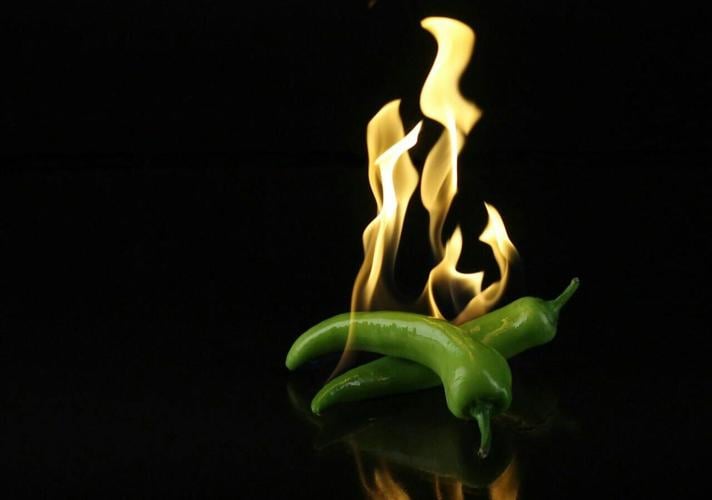
(Photo by Pixabay via Pexels)
By Stephen Beech
A new artificial tongue uses milk to determine heat levels in spicy food - without anyone having to scorch their taste buds.
Chinese researchers developed the device to quickly detect spiciness as the appearance of hot sauces or peppers doesn’t reveal whether they're mild or Carolina Reaper-level fiery.
Inspired by milk’s casein proteins, which bind to capsaicin and relieve the burn of spicy foods, the research team incorporated milk powder into a gel sensor.
The prototype, described in the journal ACS Sensors, detected capsaicin and pungent-flavored compounds - such as those behind garlic’s "zing" - in a range of foods.
As a proof-of-concept, the researchers tested eight pepper types and eight spicy foods - including several hot sauces - on the artificial tongue and measured how spicy they were by changes in electrical current.
A panel of taste testers rated the spiciness of the same items.
Results from the artificial tongue and the tasting panel matched well.

This transparent square acts like an artificial tongue, reacting to capsaicin and similar pungent compounds in proportion to a food's spiciness. (Weijun Deng, adapted from ACS Sensors 2025, DOI: 10.1021/acssens via SWNS)
The researchers say that the casein-containing artificial tongue could be used to quickly test a food’s spiciness level - without putting one’s taste buds at risk.
Study lead author Dr. Weijun Deng said: “Our flexible artificial tongue holds tremendous potential in spicy sensation estimation for portable taste-monitoring devices, movable humanoid robots, or patients with sensory impairments like ageusia, for example.”
Currently, measuring flavor compounds in foods requires taste testers and complex lab methods.
As an alternative, scientists are developing artificial tongues, which can measure tastes including sweet and umami, among others.
However, capsaicin in chili peppers, piperine in black pepper, and allicin in garlic produce stinging, tingling or burning sensations that are hard to replicate and measure with synthetic materials.
The Chinese research team noted that the heat of peppers, for example, can be neutralised when their capsaicin is bound by casein proteins in milk.
They wanted to create an artificial tongue by adding casein to an electrochemical gel material and measuring spiciness through an electrical current change that occurs when casein binds to capsaicin.

(Photo by Isabella Mendes via Pexels)
The researchers created a tongue-shaped film by combining acrylic acid, choline chloride and skim milk powder, and then they exposed the solution to ultraviolet light.
The resulting flexible and opaque gel conducted an electrical current.
Ten seconds after the researchers added capsaicin on top of the film, the current decreased, showing its potential as an artificial, spice-detecting tongue.
Dr. Deng, of Shanghai Institute of Technology, said: "Initial tests showed that the milk-containing material responded to capsaicin concentrations ranging from below human detection to beyond levels perceived as painful, called the oral pain threshold."
He added: "Additionally, the material detected other pungent-flavored compounds found in common hot sauce ingredients: ginger, black pepper, horseradish, garlic and onion."

























(0) comments
Welcome to the discussion.
Log In
Keep it Clean. Please avoid obscene, vulgar, lewd, racist or sexually-oriented language.
PLEASE TURN OFF YOUR CAPS LOCK.
Don't Threaten. Threats of harming another person will not be tolerated.
Be Truthful. Don't knowingly lie about anyone or anything.
Be Nice. No racism, sexism or any sort of -ism that is degrading to another person.
Be Proactive. Use the 'Report' link on each comment to let us know of abusive posts.
Share with Us. We'd love to hear eyewitness accounts, the history behind an article.